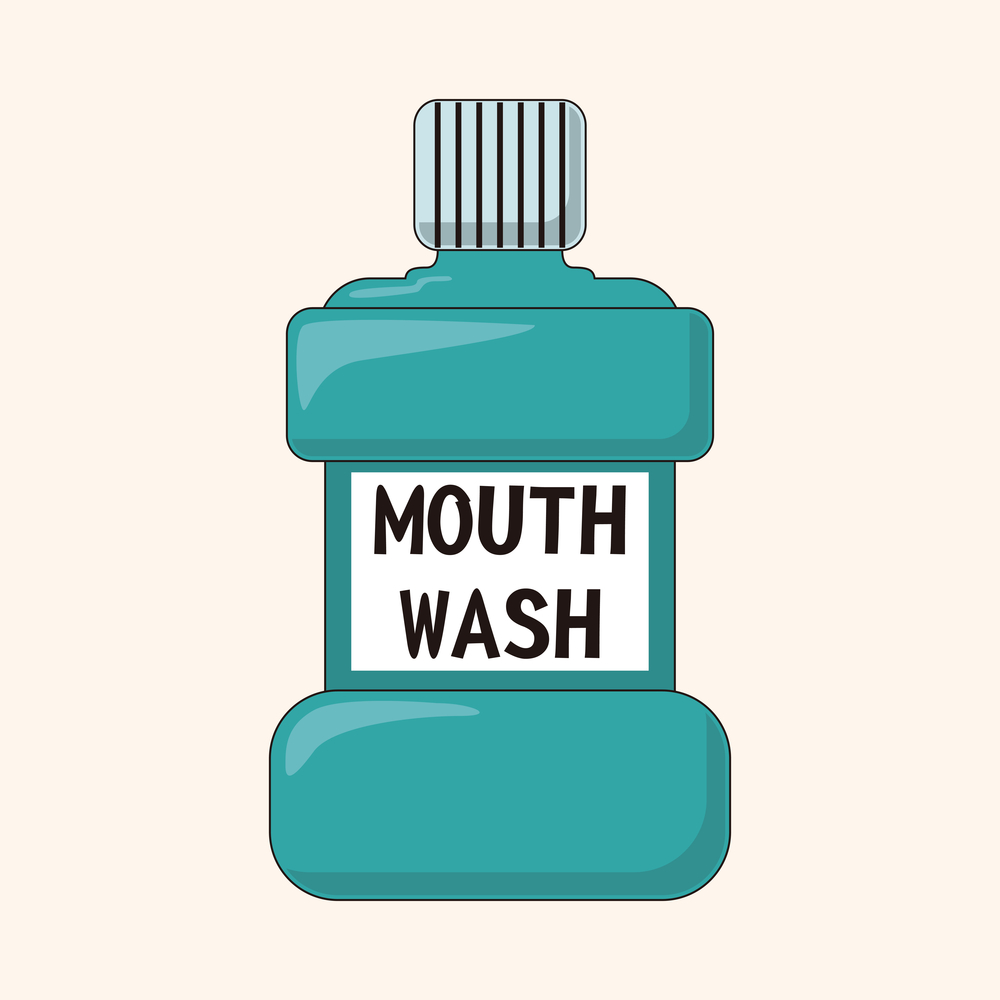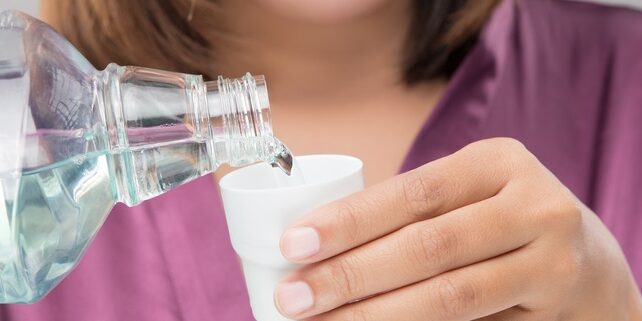You brush twice a day and floss once a day. What’s next? Mouthwash! Mouthwash may be overlooked in a daily routine, but it can be helpful as an additional daily dental hygiene practice. This is because the antimicrobial ingredients in mouthwash help bolster the benefits of brushing and flossing.
Using mouthwash should not be thought of as a replacement for brushing and flossing. It’s not entirely necessary for oral health, but it can provide some optimal long-term improvements.
How Does Mouthwash Help Dental Hygiene?

Mouthwash wash illustration
Just like toothpaste, there are specially formulated types of mouthwash that address certain areas of oral health. These contain ingredients like alcohol, fluoride, chlorhexidine, and chlorine dioxide, all of which are anti-bacterial. These ingredients help with symptoms associated with:
- Bad breath – The oral condition most faced due to bacteria, mouth infections, or sulfuric compounds in the mouth is halitosis or bad breath. Mouthwash effectively hinders the existence of bad breath-causing bacteria, leaving a minty fresh taste and scent after its use.
- Tooth decay – The fluoride in mouthwash strengthens tooth enamel, which is the best defense against acidic erosion of the teeth. Tooth decay begins slowly as the acid from the foods you eat starts to break down the surface of your teeth. Mouthwash with fluoride helps thoroughly wash away those acids and keep them away for a time.
- Gingivitis – When plaque builds up on the teeth and gum line, an infection called gingivitis can occur. Antiseptic mouthwash works to break down plaque build-up and kill the bacteria found in plaque. This bacteria-fighting power helps prevent gum disease.
- Dry socket – After tooth extraction, alveolar osteitis, or dry socket may occur. This is when nerves and bone in the mouth become exposed, resulting in pain in the socket. Certain types of mouthwash can help with the pain from simple or surgical extractions.
- Teeth whitening – Mouthwashes containing hydrogen peroxide and other ingredients help eliminate stains on the teeth. This can be an adequate way to help create noticeably whiter teeth over time.
How and When Should Mouthwash be Used?
You can use mouthwash at any time of the day when you need to get rid of bad breath. However, in order to get the best out of your mouthwash routine, it’s best to use it after you brush and floss your teeth. Try to avoid smoking, eating, or drinking for at least 30 minutes after you’ve rinsed your mouth with mouthwash. You may find that using mouthwash periodically throughout the day can help alleviate toothaches.
Since mouthwash can contain high amounts of alcohol, it isn’t created to be swallowed. Mouthwash is to be swished around and gargled in the mouth for about 30 seconds and then spit into the sink.
Small children should avoid using mouthwash, especially when they haven’t yet learned how to control their swallowing reflexes. Children and other people with sensitivities might appreciate using mouthwash with lower amounts of alcohol in them. Kids’ mouthwash contains flavorings that help make the rinse more tolerable.







